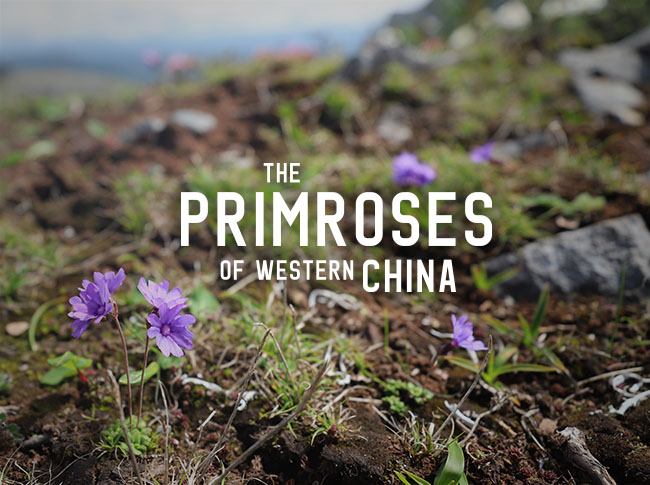We are all familiar with primroses, but did you know that nearly half of the world’s wild primroses come from the Himalayas? With 500 species worldwide, at least 300 are found here. One of my most favorite plant families, I wanted to dedicate a single post to just primula that we saw on this trek, so here you go. Fair warning though – the names are still being worked out, I only have a couple of good books to key out what we found, so if you’re an expert, feel free to correct me and I’ll credit you. Aside from that, enjoy the shots!
 |
| The tiny and lovely mat-forming Primula nanobella, here on the top of Shikashan, elevation 14,000. We saw this on the high mountain tundra found on many mountains from Shangrila, going northwest to the Tibetan border. Growing no higher than 3 inches in some places it virtually covered the ground. The tube or ‘mouth’ is filled with fibers or a pom pom of tiny lavender hairs which make the center of the flower appear blurry or congested, an interesting feature that liked to freak out my camera as it focused. |
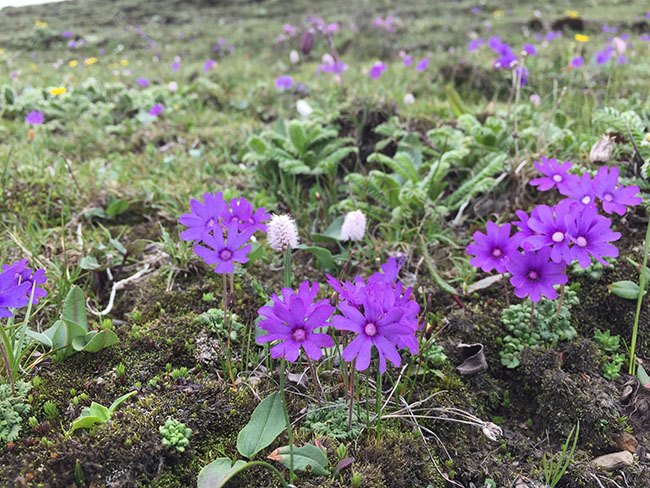 |
| The singular flowers of P. nanobella arise from the tiniest rosettes, no larger than a thumbnail, and as you can see, their color was practically a florescent violet. |
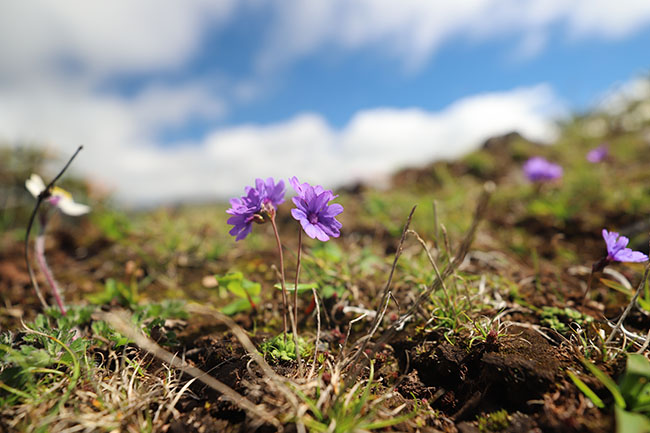 |
| I shot lots of videos as well, which I hope to edit into some project in the future, or just to show at future talks, but this tiny primrose was very animated as the wiry stems ensured that the flowers would bounce and wave in the strong winds. |
 |
| Primula dradifolia, Baimashan |
 |
| Another view of what I believe is P. dryadifolia. I just can’t find a good image in any of my books. |
 |
| Here is a view of our group botanizing in an open alpine meadow on Shikashan (or Shika Shan, as ‘Shika’ means deer, and ‘Shan’ means mountain). This meadow was full of primroses and that low shrub you see blooming is rhododendron. |
 |
| PRimroses in the section Muscarioides look somewhat like the Dutch bulb Muscari. |
 |
| Primula amethystina subsp. brevifolia on Shika Shan, Yunnan, China. |
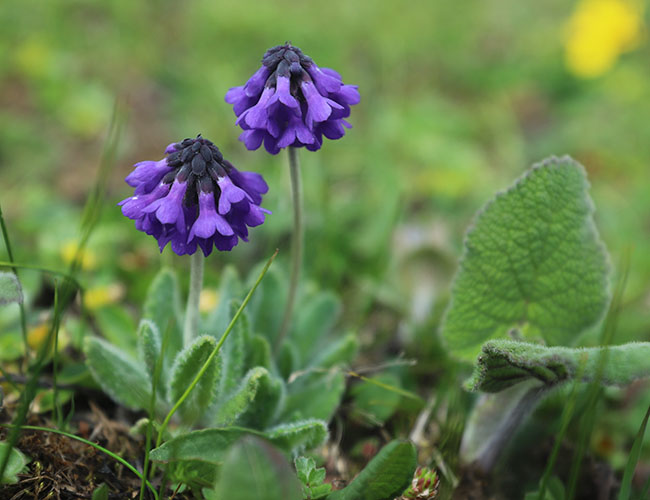 |
| Perhaps Primula pinnatifida(?), on Baimashan, 14,000′. |
 |
| At lower elevation this may be the same species but at 12,000′ more elongated. |
 |
| Primula minor, on a pass, Hong Shan, 4500m. Don’t tell me that it’s P. brevicula, but…ok, if it is, let me know. I don’t have a good key aside from the fine new book Flowers of Western China by Cribb and Grey-Wilson (Kew). |
 |
| One of the mystery primroses. Please share your ID notes if you think that you know which one this is. Shika Shan, NW. Yunnan around 12,000′. |
 |
| P, chionantha subsp. sinopurpurea |
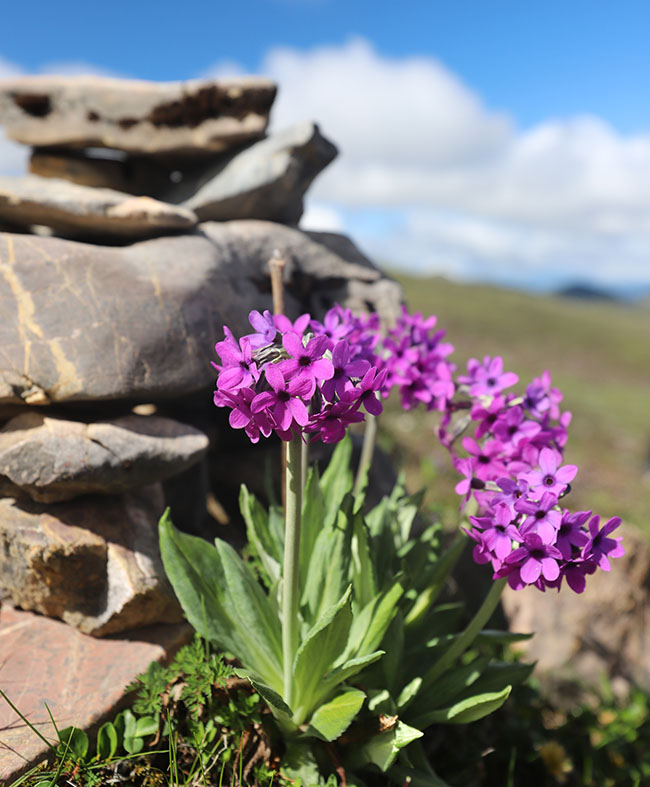 |
| More Primula chionantha subsp. sinopurpurea but shorter, as this is at high elevation on the summit of ShikaShan, 4400m. |
 |
| Getting familiar with a nice specimen of Primula chionantha subsp. sinopurpurea |
 |
| P, chionantha subsp. sinopurpurea on the mining road leading up to Hong Shan. |
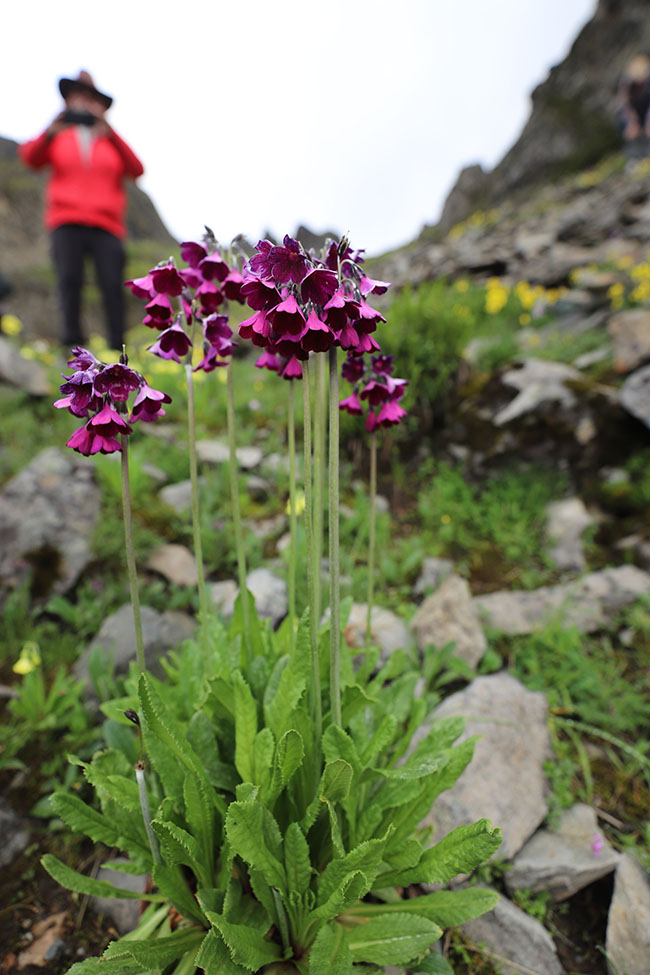 |
| Primula secundiflora, near the pass at Hong Shan, 4500 m. |
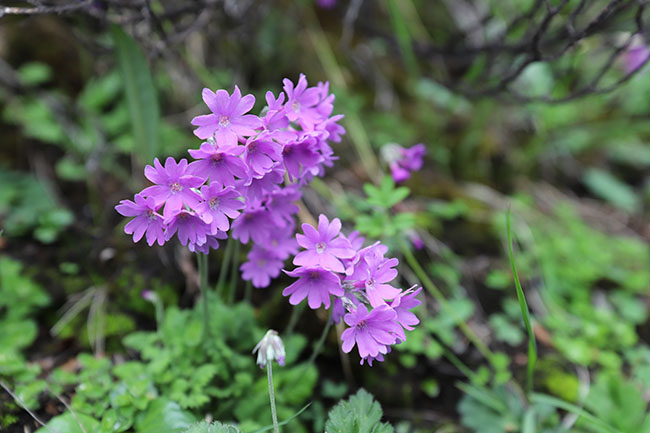 |
| Primula yunnanensis, Baimashan, NW Yunnan |
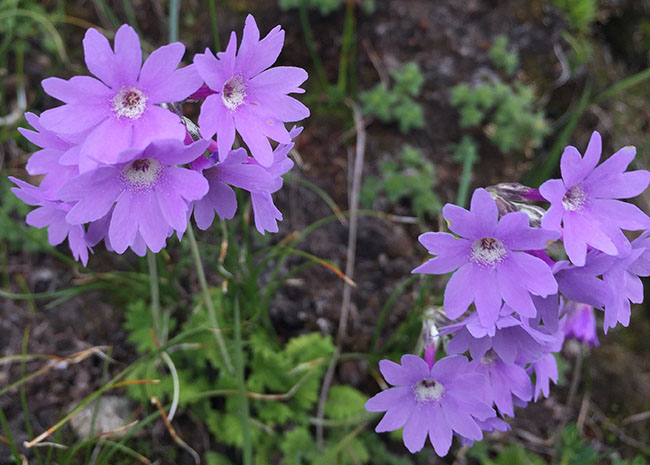 |
| A closer view of P/. yunnanensis. See the tiny bits of white farina? |
 |
| My eyes are getting tired, but I cannot seem to ID this one…any ideas? |
 |
| P. sikkimensis , perhaps var.pseudosikkimensus however, this was at high elevation on Shikashan at 14,000′ and not on Yulongxueshan in NW Yunnan where the variant is presumably limited to at high elevation. The large blossoms and short stature at high elevation make it difficult to ID. I welcome thoughts from the primula experts. |
 |
| Of all the primula species it is this beauty, the fragrant (as Panayoti Kelaidis From the Denver Botanic Garden demonstrates here) Primula sikkimensis that really puts on a show as it often forms great colonies both at high elevation and above 9,000′ throughout this part of the Himalaya. We found spectacular colonies near streams and seeps throughout our trek. |
 |
| At high elevation, such as this stream bed on Hongshan near 15,000′ the colonies stopped us in our tracks. |
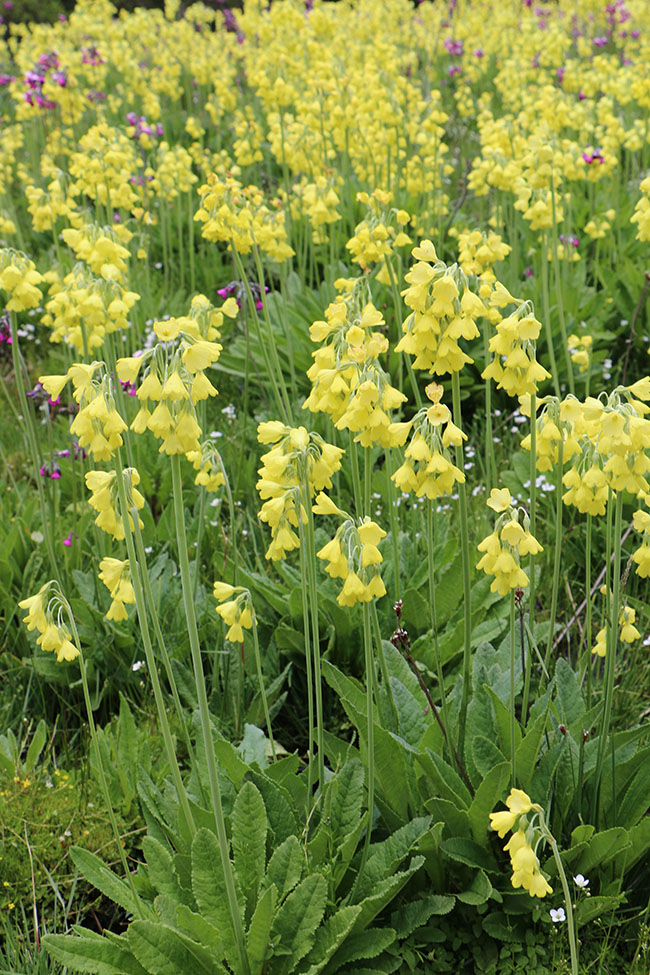 |
| But near alpine lakes, the show often became truly spectacular, such as this colony nearly 1/8 mile long at Tianchi lake 3850m. Even trying to capture an image that would show the immense scene was challenging. You can see how dense these were growing. Just amazing, as I begin to run out of adjectives. |
 |
| The massive colonies of P. sikkimensis extended around the lake. |
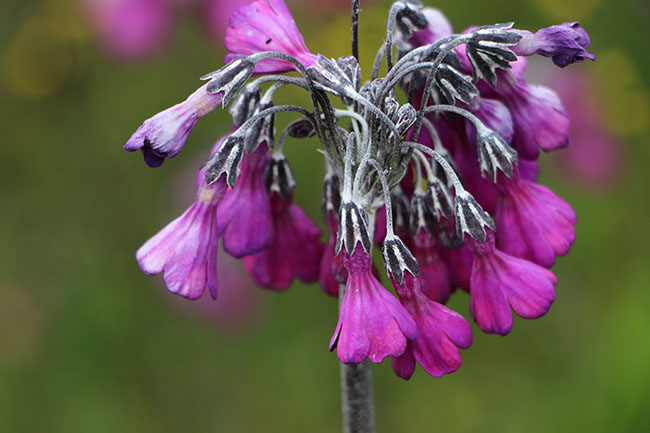 |
| Another colony-forming primrose is this pink beauty, if only we could grow it here in New Engand! Primula secundiflora is just another one of those Himalayan primroses which most of us could only dream of growing, yet here it grows in abundance, often forming large colonies near streams and wet bogs, deceiving us all with its weedy appearance. Don’t taiunt us P. secundiflora! |
 |
| We came across colonies of P. secundiflora everywhere, but mostly between the areas around Zongdian (Shangrila) and Baimashan. |
 |
| As you can see, some of the colonies were massive and every where one looked, there were thousands of plants. |
 |
| And then this happened. Primula overload once you mix it all together. So if you garden designers believe that yellow and magenta cant work together, don’t tell Mother Nature. Both Primula secundiflora and P. sikkimensis growing on a wide seep at Tianchi Lake which is still at high elevation near 3800m. There were millions of them. |
 |
| Other primroses colonize as well as if the above experiences weren’t enough. Here are at least three species of primroses, maybe more. Most of the color in this meadow comes from the pale yellow P. sikkimensis and the pink P. zambalensis. |
 |
| Colonies of P. zambalensis around Dechin and the high passes of Bai Ma Shan were quite variable, with some completely white and every shade of violet-pink inbetween. |
 |
| Every plant of this primula looks like a perfect pot plant. |
 |
| Here is one of the nearly white forms. |
 |
| P.szechuanicawas the only species we saw in the section Maximowiczii which typically has species with dark or black flowers. |
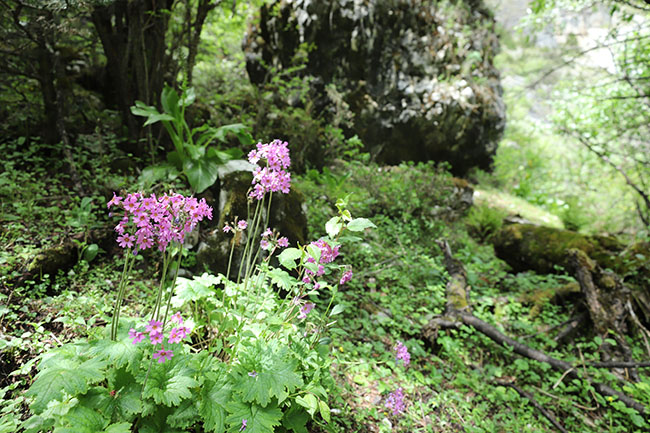 |
| At lower elevations, if one can consider 11,000′ low, we found primula in the woodlands. Here is P. polyneura on Baimashan. |
 |
| P. polyneura with its wiry stems and delicate blooms in a woodland. |
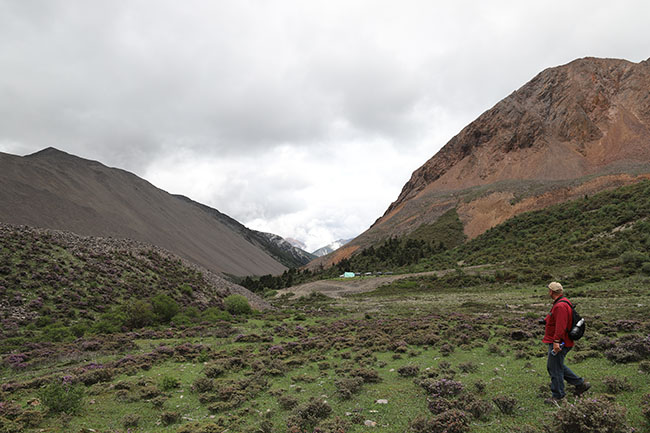 |
| Scott Smith from Colorado treks across a high elevation pass loaded with tiny rhododendron in full bloom and even more primroses. The ten of us were starting to get tired on these last few days, but all it took was a single sighting of another rare plant to get us climbing high. This day we went the highest, up to 16,500′. |
Throughout much of this area were other genus within primulaceae, so it makes sense to me to include a few from the genus Androsace, as they are so closely akin to primroses.
 |
| Androsace zambalensis (my guess). Please correct me. |
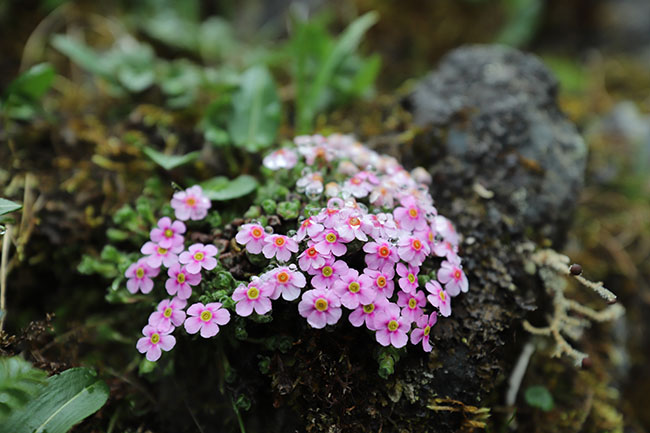 |
| I probably shouldnt be covering Androsace, as I am not getting the names right, but I dont want this to hold up a post. This possibly is Androsace delavayi. |
 |
| Many Androsace form rosettes or even tight buns at high elevation, but this one doesn’t. Perhaps A. mariae. |
 |
| I think this is Androsace spinulifera |
 |
| Androsace delavayi |
 |
| Perhaps the most lovely Androsace is this one we found on a knoll just above the Zhongdian plain, A. bulleyana. |
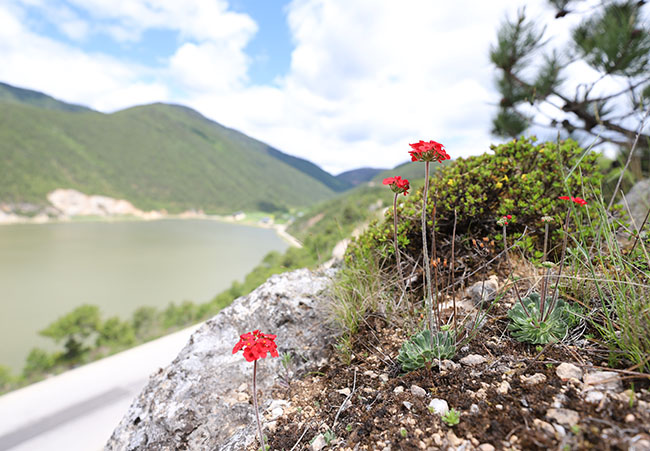 |
| Just above the road the encircles the great plain of Zhongdian in Shangrila were large colonies of this bright red Andnrosace. It forms tiny rosettes and long, wiry stems topped off with bright red umbels. |
 |
| Androsace bulleyana in full sun growing in grass. |
 |
| As you can see, primulaceae were found at all levels and in every location here in Northwestern Yunnan near the Tibetan borderlands. Truly a primrose-rich area and a sight few plant people ever get to see as most plant collectors collect in the autumn and not during the bloom season just after snowmelt in late spring and the Himalayan summer in June and early July. |

Source: http://www.growingwithplants.com/2018/07/the-incredible-primroses-of-yunnan-and.html


































